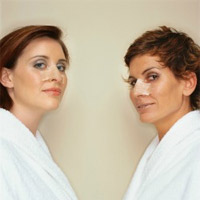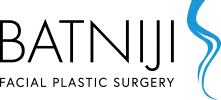How to Manage Bad Results From Your Rhinoplasty

When you’re planning for a rhinoplasty, you might already be worried about the consequences of what happens if something goes wrong. On the other hand, the idea might never cross your mind. While it’s good to be prepared, stressing out about results that haven’t happened yet won’t help you at all. When your procedure is over, take some time to get to know your new nose and your new look. Only then, once the healing process is complete and you’ve adjusted to the change, should you start to think about revisions. Not all rhinoplasty results come out perfect and it’s okay to have questions about your new nose. If you do experience disappointing results, here’s exactly what you need to know about managing them to achieve the nose you wanted in the first place.
Rhinoplasty: An Intricate Surgery
Rhinoplasty is a delicate surgery that can be performed two ways depending on the changes being made to your nose.
The first approach is a closed or endonasalrhinoplasty, which begins with incisions confined to the inside of the nostrils. Closed rhinoplasty results in no visible scars following your procedure. With the incisions made, your surgeon will lift the skin from the underlying cartilage and bone in order to alter the contour and structure of the nose.
For an open or external rhinoplasty, your surgeon will place a very small incision between your nostrils, just on the underside of the nose. While this approach does leave an external scar, it is barely visible because of its location. Open rhinoplasty techniques allow the surgeon to open the tip of the nose and reveal the lower and middle-third nasal structures.
During your consultation, your surgeon will discuss both techniques with you and make a recommendation that best suits your needs, addresses your concerns, and provides you with your desired outcome.
How Rhinoplasty Can Go Wrong
Rhinoplasty is one of the most delicate and intricate surgical procedures to perform. There are so many tiny bones and sensitive cartilage structures in the nose that every move must be carefully considered. A trained, experienced plastic surgeon will plan your surgery down to the last detail before the day your procedure even arrives. Surgeons are only human, however, and sometimes mistakes can happen. Small errors may necessitate a revision surgery, which will be planned carefully and thoroughly to correct the problem.
Sometimes, rhinoplasty results are not as expected because of a miscommunication. Although your surgeon will make every attempt to be sure that he or she has understood your surgical desires and expected outcome, some things get lost in translation. Because talks about rhinoplasty results may sometimes be conceptual only, misinterpretations do happen. Visuals can certainly eliminate these errors, since it gives a solid result that both surgeon and patient can agree on. Many plastic surgeons use modern imaging technology, photographs of past patients, and other means to guarantee mutual understanding. Speak up if you feel you’re being misunderstood by your surgeon before you need to have a second surgery to correct the mistake.
The healing stage is another tricky piece of the rhinoplastyprocess that can go wrong for a patient. The complexity of nasal surgery means that healing must go exactly according to plan to prevent the delicate bones from shifting or an infection from occurring, for example. To ensure that your nose is able to heal smoothly, quickly, and without complication, follow your surgeon’s instructions for after-care line by line and stay away from anything that could damage your nose before the bones have had the chance to set.
The Revision Rhinoplasty Process
First and foremost, timing is essential when it comes to a revision rhinoplasty. You can’t group multiple nasal surgeries too closely together, as it is unsafe and unhealthy. Ideally, you should wait at least 12 to 18 months between surgeries to ensure you have properly and fully healed in the interim. Your plastic surgeon will make the final decision about the timing of your procedure, so you may find your surgery delayed a few months when you meet for your revision rhinoplasty consultation. Getting the best results is worth waiting for, so try to be patient during this important part of the process.
Your revision rhinoplasty will begin in much the same fashion as your original surgery, with a one-on-one consultation to discuss your concerns, have your nose examined, and plan ahead for your desired and revised results. The surgery itself can be performed using the open or closed approach; your surgeon may use the same approach again (i.e. an open rhinoplasty twice) or the other (i.e. a closed rhinoplasty followed by an open). The choice will depend on your unique needs, nasal features, and the corrections that are being made. The open technique, however, does tend to be more common among second-time rhinoplasties, because of the greater access it gives the surgeon to access problems.
During your revision rhinoplasty, your surgeon may choose to use only local anesthetic to correct minor problems. For more in-depth corrections to the nose, you will likely be fully sedated with general anesthetics. Your recovery, side effects, and potential complications after a revision rhinoplasty will be the same as those of your original rhinoplasty surgery.
Safeguard Your Rhinoplasty Results
If you want to get the bestrhinoplasty results the first time around, or if you’re in need of a revision,the key lies in choosing the best surgeon possible with a proven history of satisfied patients and great results. Dr. Rami Batniji is available at his Newport Beach office (949-650-8882) or Beverly Hills, California, office (310-467-2180) to discuss your concerns. Prospective patients can also email the staff to schedule an initial appointment. The doctor provides full services to patients seeking aesthetic improvement to the face including facial plastic surgery, non-surgical treatments, and cosmeceutical skin care products.

